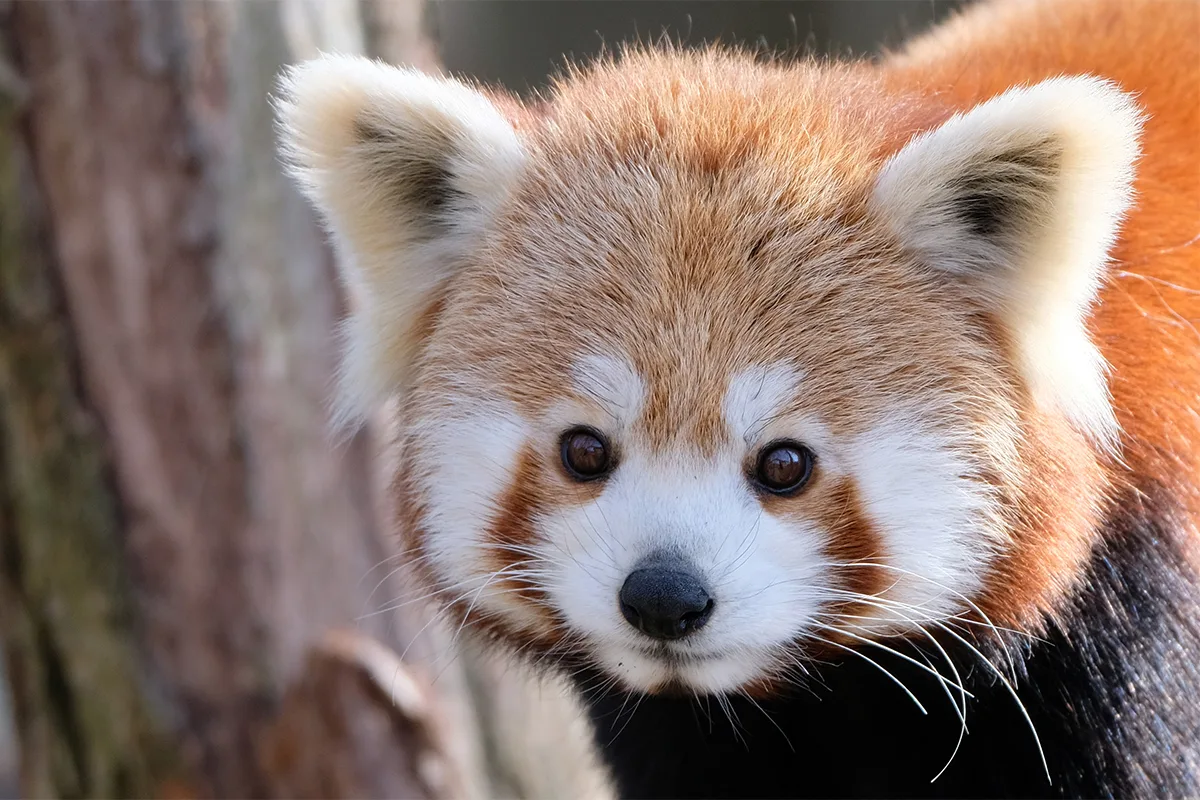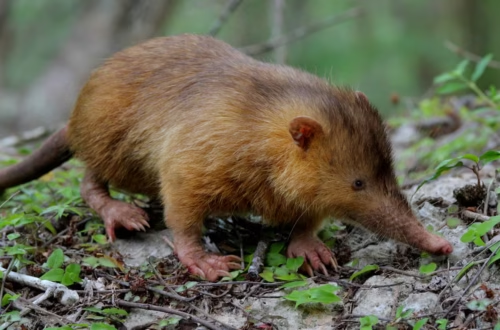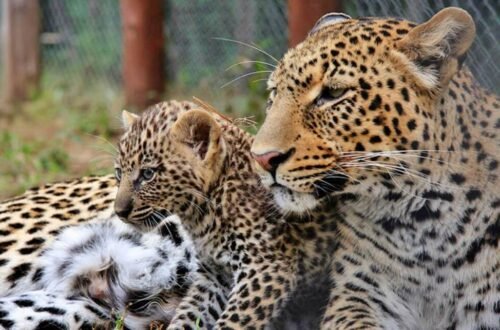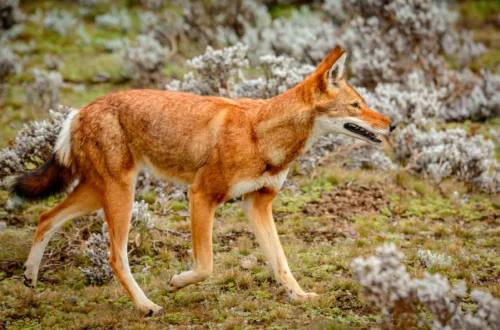Welcome to a delightful exploration of the cutest animals on Earth! At Globozo.site, we’re passionate about sharing the wonders of the natural world, and nothing brings a smile quite like the adorable creatures that roam our planet. From tiny primates to fluffy marsupials, this article dives deep into the science and charm behind what makes these animals so irresistibly cute. Whether you’re an animal lover or just looking for a dose of joy, join us as we uncover the top 10 cutest animals, their unique traits, and where you can catch a glimpse of them in the wild or responsibly in captivity.
Why Do We Find Animals Cute?
The concept of “cuteness” isn’t just a random feeling—it’s rooted in science. Known as the “baby schema,” features like big eyes, round faces, and small bodies trigger our nurturing instincts, making us go “aww” almost instantly. These traits remind us of human babies, sparking a desire to protect and care. At Globozo.site, we’ve seen how these adorable animals captivate audiences worldwide, from viral social media posts to conservation campaigns.
The Science of Cuteness
The baby schema, first identified by ethologist Konrad Lorenz, explains why certain animals melt our hearts. Large eyes, chubby cheeks, and small noses mimic human infants, activating brain regions linked to caregiving. This evolutionary trait ensures we prioritize the vulnerable, whether they’re human or animal. It’s no wonder these creatures dominate our feeds on platforms like Instagram and TikTok
Why It Matters
Cuteness isn’t just for fun—it drives conservation efforts. Adorable animals like pandas and quokkas often become mascots for environmental causes, raising awareness and funds. By learning about these species on Globozo.site, you’re joining a global movement to protect our planet’s biodiversity.
1. Quokka: The World’s Happiest Animal
With their perpetual smiles and curious nature, quokkas top our list as the happiest-looking animals on Earth. Found primarily on Rottnest Island off Western Australia, these small marsupials have become internet sensations for their selfie-friendly demeanor. Their round faces and friendly behavior make them impossible to resist.
Where to See Quokkas
Quokkas thrive in the wild on Rottnest Island, where they’re protected from predators. Visit during Australia’s spring (September–November) for the best experience, but respect their space—human interaction can stress them. Check Globozo.site for eco-friendly tour recommendations.
Conservation Status
Listed as vulnerable, quokkas face threats from habitat loss and human interference. Support conservation by choosing responsible tourism operators listed on Globozo.site and avoiding feeding or touching these wild creatures.
2. Pygmy Marmoset: The Pocket-Sized Primate
The pygmy marmoset, the world’s smallest monkey, weighs just over three ounces and fits in the palm of your hand. Native to South America’s Amazon rainforests, these tiny primates have big, expressive eyes and fluffy fur that make them look like living plush toys.
Where to See Pygmy Marmosets
Spot them in the wild in Colombia, Brazil, or Ecuador through guided rainforest tours. Alternatively, reputable zoos like the San Diego Zoo offer ethical viewing. Visit Globozo.site for trusted zoo and tour recommendations.
Why They’re Threatened
The illegal pet trade poses a significant risk to pygmy marmosets. Their cuteness makes them targets, but they belong in the wild. Learn how to support ethical wildlife tourism at Globozo.site.
3. Red Panda: The Fluffy Forest Acrobat
Red pandas, with their reddish fur and mischievous faces, look like a cross between a fox and a raccoon. Native to the eastern Himalayas and southwestern China, these tree-dwelling mammals are known for their playful antics and bushy tails.
Where to See Red Pandas
Visit conservation-focused sanctuaries in Nepal or zoos like the Toronto Zoo, which prioritize animal welfare. Globozo.site offers resources on ethical wildlife experiences.
Conservation Challenges
Red pandas are endangered due to habitat loss and poaching. Support their survival by donating to organizations like the Red Panda Network, linked on Globozo.site.
4. Fennec Fox: The Desert Darling
Fennec foxes, with their oversized ears and tiny faces, are the smallest canids in the world. Found in North Africa’s deserts, their sandy fur and playful demeanor make them a fan favorite.
Where to See Fennec Foxes
Responsible desert safaris in Morocco or Algeria offer chances to see them in the wild. Avoid petting zoos, as fennec foxes require specialized care. Find trusted tour operators at Globozo.site.
Why They’re Not Pets
Despite their cuteness, fennec foxes are wild animals with complex needs. Their popularity in the pet trade threatens wild populations. Learn more about ethical wildlife practices at Globozo.site.
5. Sea Otter: The Playful Ocean Cuddler
Sea otters, with their fluffy fur and hand-holding habits, are among the ocean’s most charming residents. Native to the Pacific coast, they’re known for floating on their backs while cracking shellfish with rocks.
Where to See Sea Otters
Monterey Bay Aquarium in California offers ethical viewing, or join a coastal tour in Alaska. Check Globozo.site for eco-conscious travel guides.
Conservation Success
Once nearly extinct, sea otters have rebounded thanks to conservation efforts. Support their recovery through organizations like the Sea Otter Foundation, linked on Globozo.site.
6. Slow Loris: The Wide-Eyed Wonder
Slow lorises, with their huge, glossy eyes and teddy-bear-like faces, are nocturnal primates from Southeast Asia. Their slow movements and cuddly appearance make them irresistibly cute.
Where to See Slow Lorises
Avoid pet trade interactions, as they’re often cruel. Instead, visit sanctuaries like the Kukang Rescue Program in Indonesia. Find ethical options at Globozo.site.
The Danger of Cuteness
Slow lorises have a toxic bite, and their cuteness fuels illegal pet trade demand. Learn how to protect them through resources on Globozo.site.
7. Axolotl: The Smiling Salamander
Axolotls, with their pink gills and perpetual grins, are unique amphibians from Mexico. Known for retaining juvenile features into adulthood, they’re a favorite in aquariums and research labs.
Where to See Axolotls
Visit aquariums like the Shedd Aquarium in Chicago or support conservation projects in Mexico. Globozo.site lists responsible viewing options.
Conservation Status
Critically endangered due to habitat loss, axolotls need our help. Support efforts through organizations like the Axolotl Conservation Project, linked on Globozo.site.
8. Japanese Dwarf Flying Squirrel: The Fairy-Tale Glider
With big eyes and fluffy fur, Japanese dwarf flying squirrels look like they belong in a storybook. These nocturnal gliders soar through Japan’s forests, charming all who see them.
Where to See Flying Squirrels
Join guided night tours in Hokkaido’s forests or visit ethical zoos in Japan. Globozo.site offers travel tips for spotting these cuties.
Threats to Their Habitat
Deforestation threatens their forest homes. Support conservation through groups like the Japan Wildlife Conservation Society, linked on Globozo.site.
9. Capybara: The Gentle Giant Rodent
Capybaras, the world’s largest rodents, have a calm demeanor and social nature that make them adorable. Native to South America, they’re often seen lounging in groups near water.
Where to See Capybaras
Visit wetlands in Brazil or sanctuaries like the Capybara Sanctuary in Colombia. Globozo.site provides eco-tourism resources.
Why They’re Loved
Their friendly, social behavior makes capybaras a hit on social media. Learn how to support their habitats through Globozo.site.
10. Pika: The Mountain Munchkin
Pikas, small rodents found in mountainous regions, have round ears and squeaky calls that melt hearts. Their busy food-gathering habits add to their charm.
Where to See Pikas
Spot them in the Rockies or Himalayas through guided hikes. Globozo.site lists trusted tour operators for mountain adventures.
Conservation Concerns
Climate change threatens pika habitats. Support their survival through organizations like the Pika Project, linked on Globozo.site.
Comparing the Cutest Animals
| Animal | Location | Key Cute Feature | Conservation Status |
|---|---|---|---|
| Quokka | Rottnest Island, Australia | Perpetual smile | Vulnerable |
| Pygmy Marmoset | Amazon Rainforest | Tiny size, big eyes | Threatened |
| Red Panda | Himalayas, China | Fluffy fur, playful antics | Endangered |
| Fennec Fox | North Africa | Oversized ears | Least Concern |
| Sea Otter | Pacific Coast | Hand-holding behavior | Endangered |
| Slow Loris | Southeast Asia | Huge, glossy eyes | Endangered |
| Axolotl | Mexico | Pink gills, smile | Critically Endangered |
| Japanese Dwarf Squirrel | Japan | Storybook appearance | Least Concern |
| Capybara | South America | Gentle, social nature | Least Concern |
| Pika | Rockies, Himalayas | Squeaky calls | Vulnerable |
Pros and Cons of Visiting These Animals
Pros:
- Educational Value: Observing these animals teaches about biodiversity and conservation.
- Emotional Boost: Their cuteness reduces stress and brings joy.
- Conservation Support: Responsible tourism funds habitat protection.
Cons:
- Ethical Concerns: Improper tourism can harm wildlife.
- Travel Costs: Visiting remote habitats can be expensive.
- Risk of Disturbance: Human presence may stress animals if not managed properly.
People Also Ask (PAA)
What Makes an Animal Cute?
Cuteness is driven by the baby schema—features like big eyes, small noses, and round bodies that mimic human infants. These traits trigger nurturing instincts, making us feel protective. For example, quokkas’ smile-like expressions evoke joy and connection.
Where Can I See the Cutest Animals?
Visit ethical sanctuaries, zoos, or guided eco-tours in their natural habitats. For instance, Rottnest Island for quokkas or Monterey Bay for sea otters. Check Globozo.site for trusted tour operators.
Are These Animals Safe to Interact With?
Many cute animals, like slow lorises, are wild and should not be touched. Some, like quokkas, may bite if stressed. Always follow guidelines from reputable sources like Globozo.site to ensure safe, ethical interactions.
How Can I Help Protect These Animals?
Support conservation organizations, avoid illegal pet trade, and choose eco-friendly tourism. Donate to groups like the Red Panda Network or Sea Otter Foundation via links on Globozo.site.
Personal Stories: A Moment of Connection
Last year, I visited Rottnest Island, hoping to see a quokka. As I walked the trails, a curious quokka hopped over, its tiny nose twitching as it eyed my backpack. I resisted the urge to snap a selfie, knowing it could stress the little guy. Instead, I sat quietly, watching it nibble on grass. That moment reminded me why we must protect these creatures—they’re not just cute; they’re vital to our planet’s tapestry. Share your own animal encounters with us at Globozo.site!
How to Support These Adorable Creatures
- Choose Ethical Tourism: Opt for tours that prioritize animal welfare, listed on Globozo.site.
- Donate to Conservation: Support groups like the World Wildlife Fund (WWF) or local sanctuaries.
- Spread Awareness: Share articles from Globozo.site to educate others about these species.
- Avoid Illegal Pet Trade: Never purchase exotic animals like slow lorises or axolotls as pets.
FAQ Section
Why are quokkas called the happiest animals?
Quokkas’ facial structure creates a natural “smile,” making them appear joyful. Their curious, friendly nature adds to their charm, earning them this nickname.
Can I keep a fennec fox as a pet?
Fennec foxes are wild animals with complex needs, making them unsuitable as pets. Their cuteness fuels illegal trade, harming wild populations. Support their conservation instead through Globozo.site.
Are red pandas related to giant pandas?
No, red pandas are closer to raccoons and skunks than giant pandas. Their similar appearance is a case of convergent evolution. Learn more at Globozo.site.
How can I visit these animals responsibly?
Choose eco-friendly tours or sanctuaries that prioritize animal welfare. Globozo.site offers guides on ethical wildlife tourism to ensure you don’t harm these creatures.
Why are axolotls endangered?
Axolotls face habitat loss from urbanization and pollution in Mexico. Conservation efforts are critical, and you can support them through links on Globozo.site.
Conclusion: A Call to Celebrate and Protect
The world’s cutest animals, from quokkas to pikas, remind us of nature’s incredible diversity and beauty. Their big eyes and playful antics spark joy, but their survival depends on our actions. At Globozo.site, we’re committed to helping you explore and protect these creatures through responsible tourism and conservation support. Visit Globozo.site for more resources, travel guides, and ways to make a difference. Let’s keep these adorable animals thriving for generations to come!





